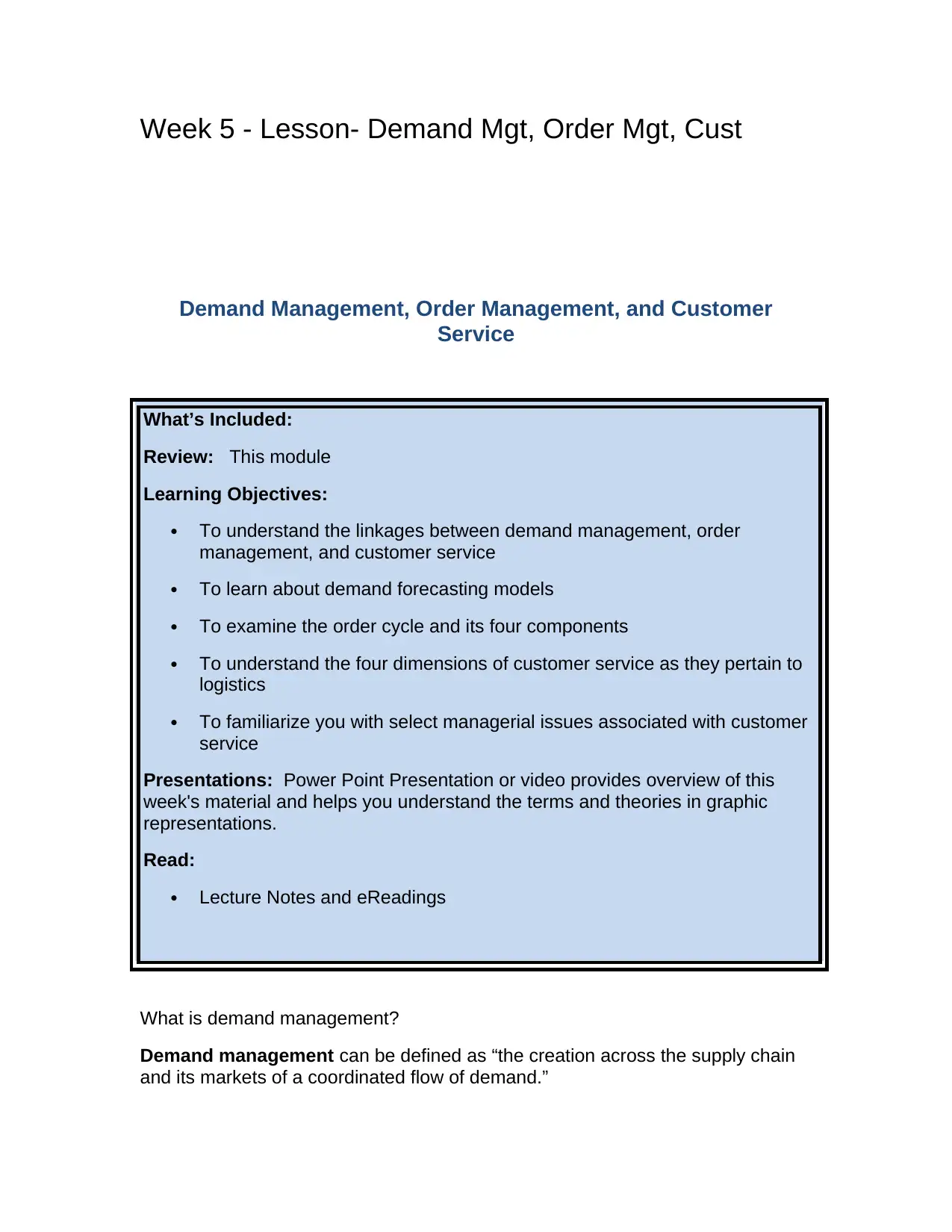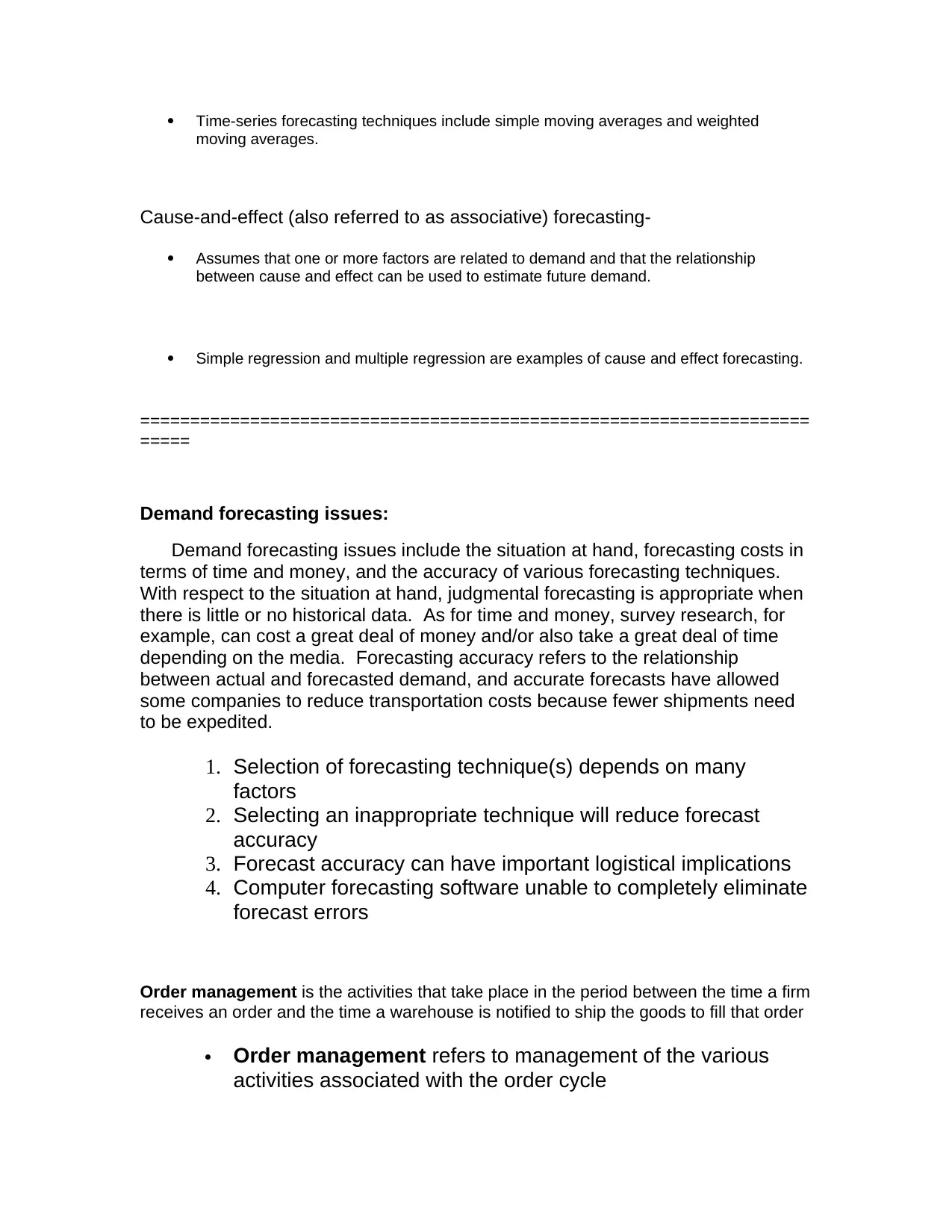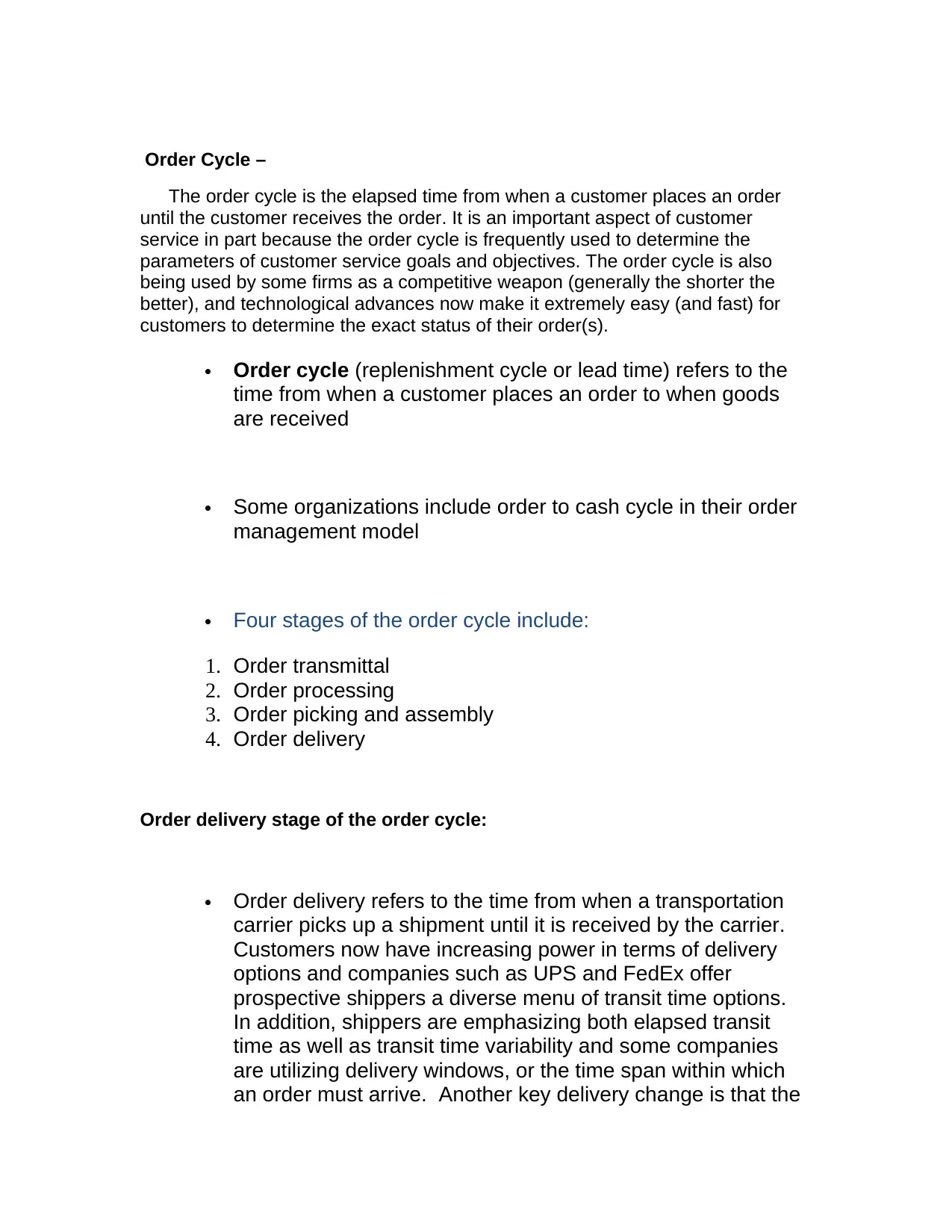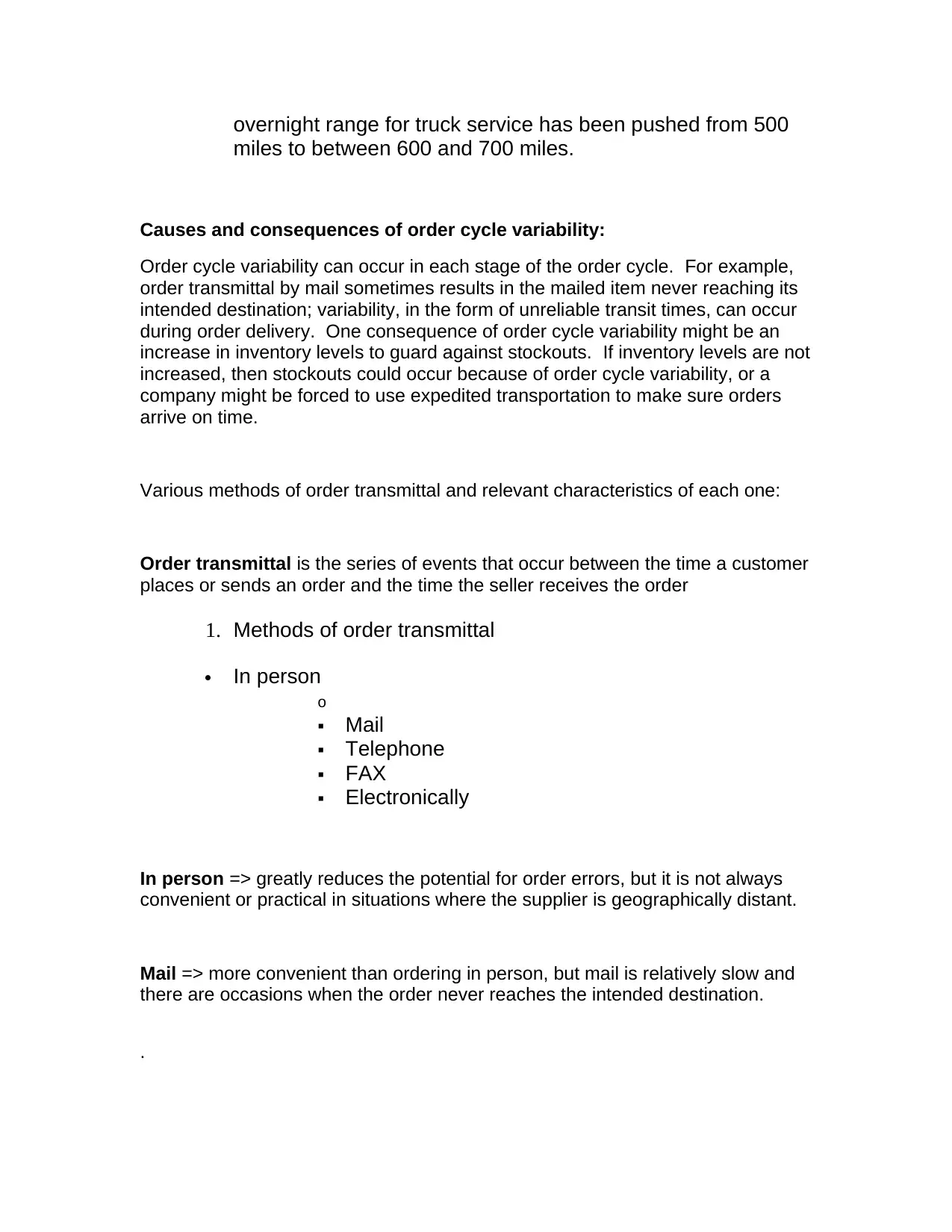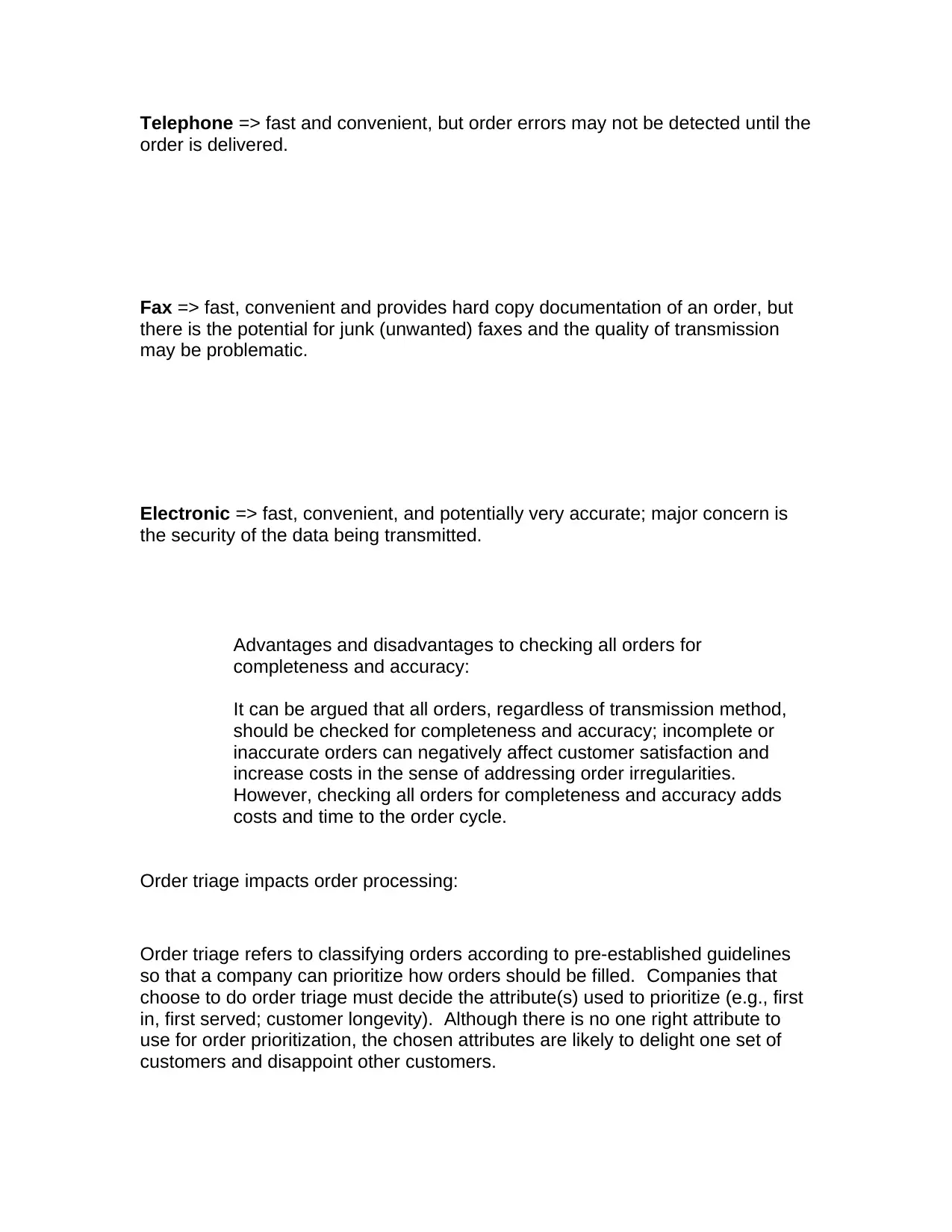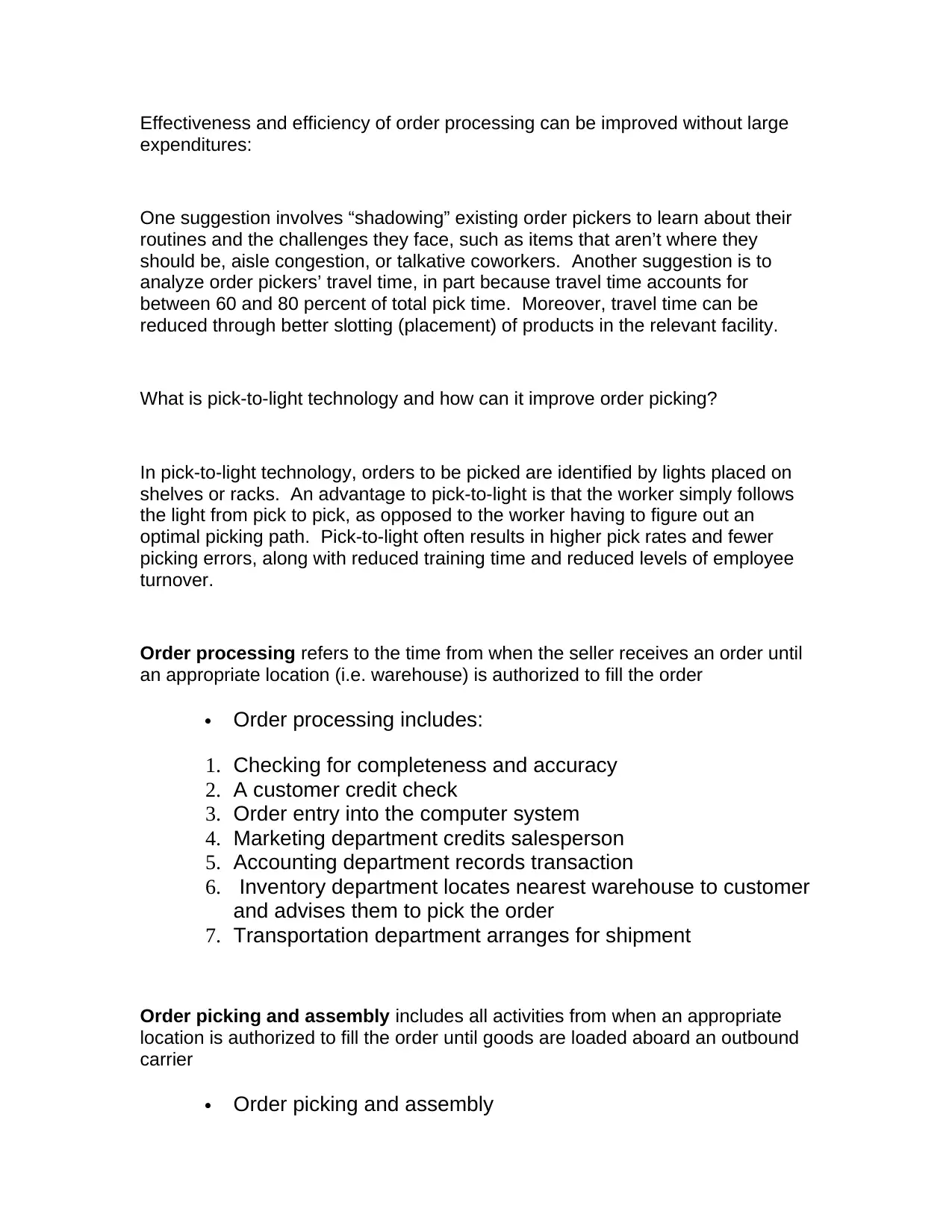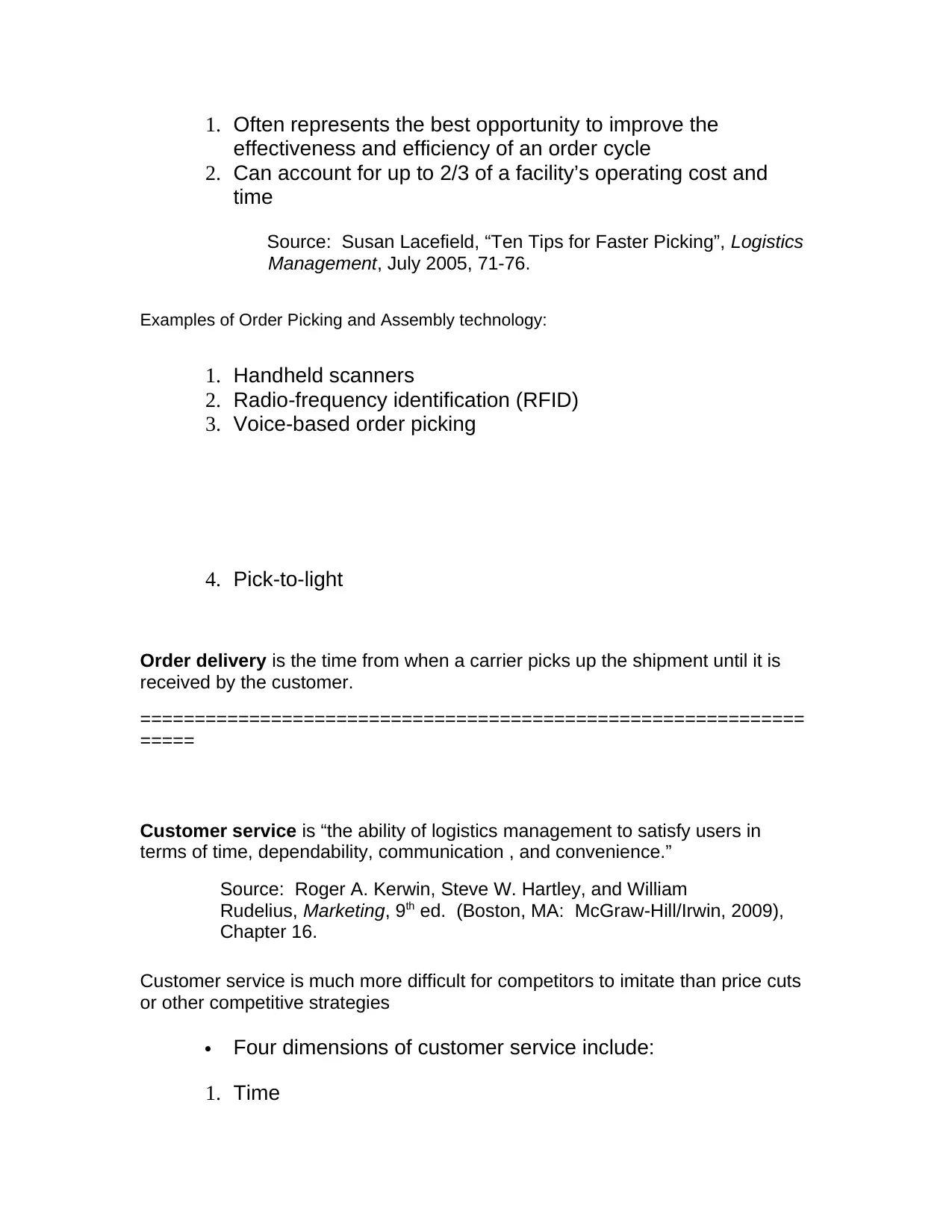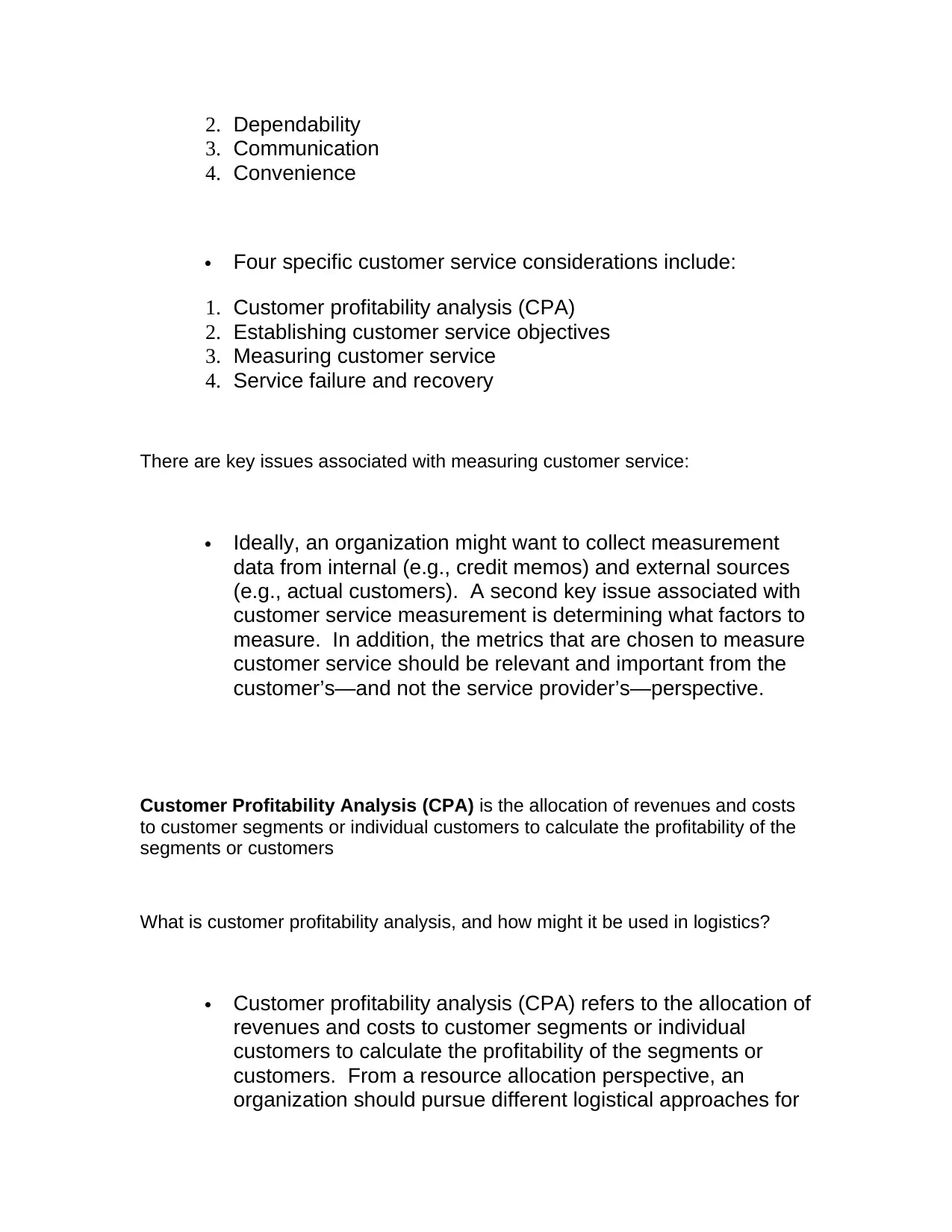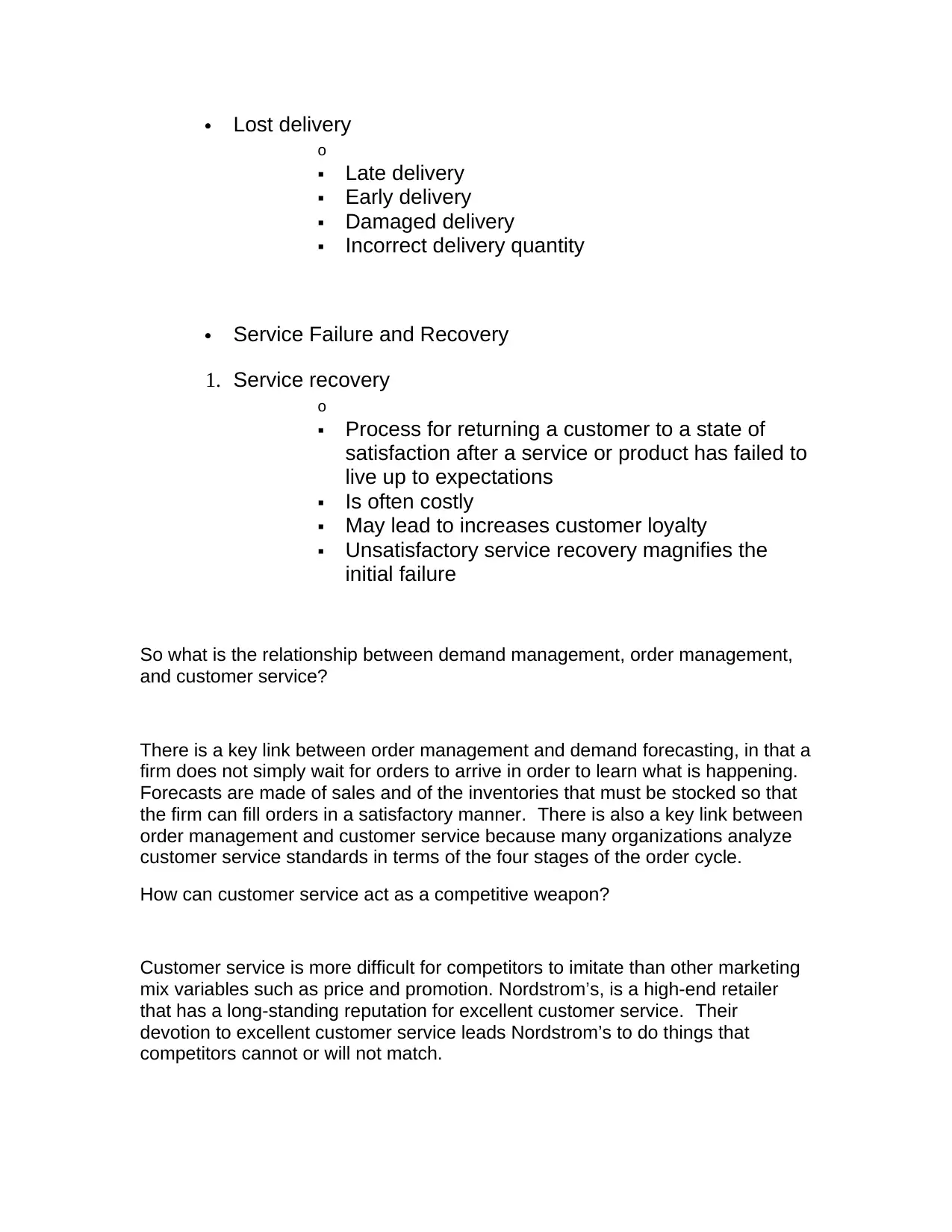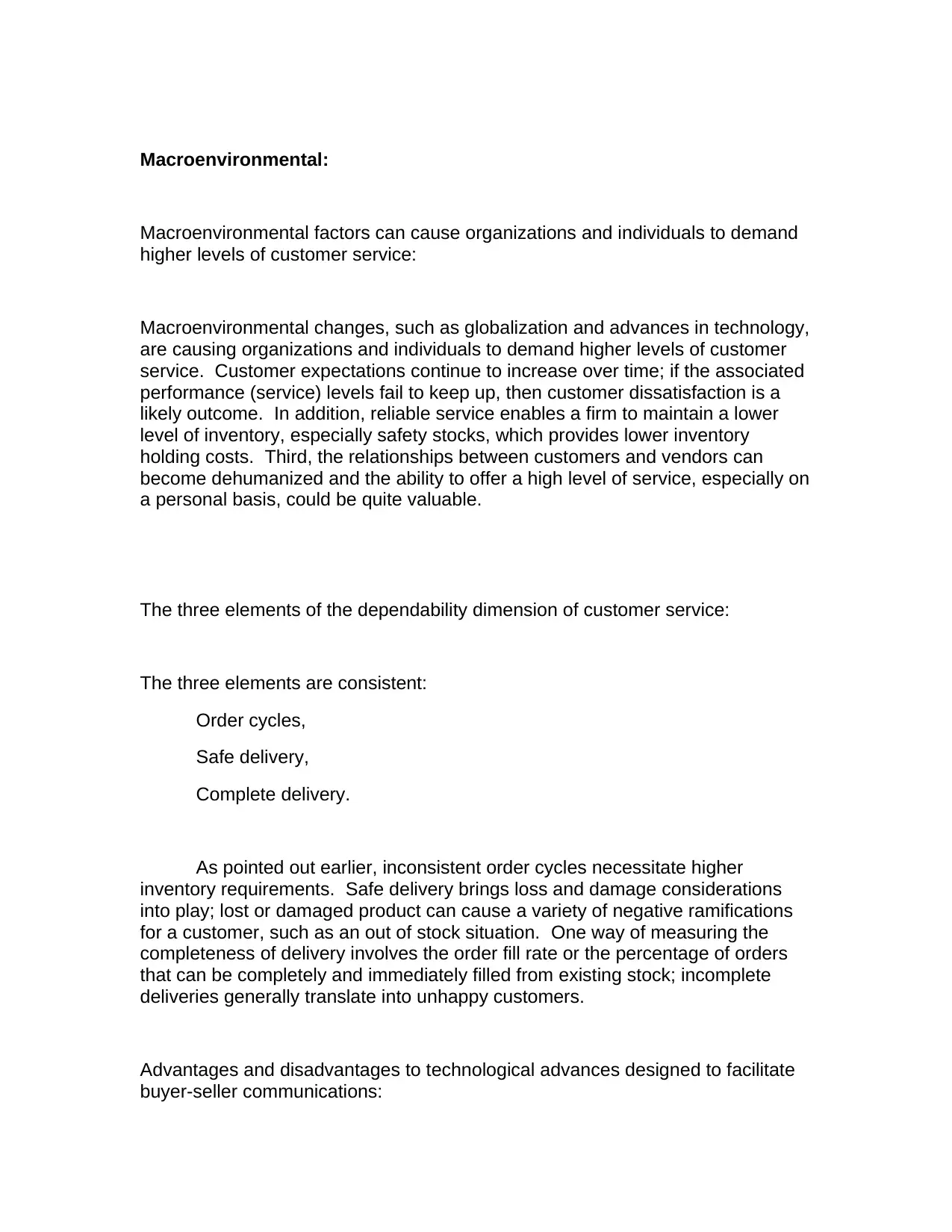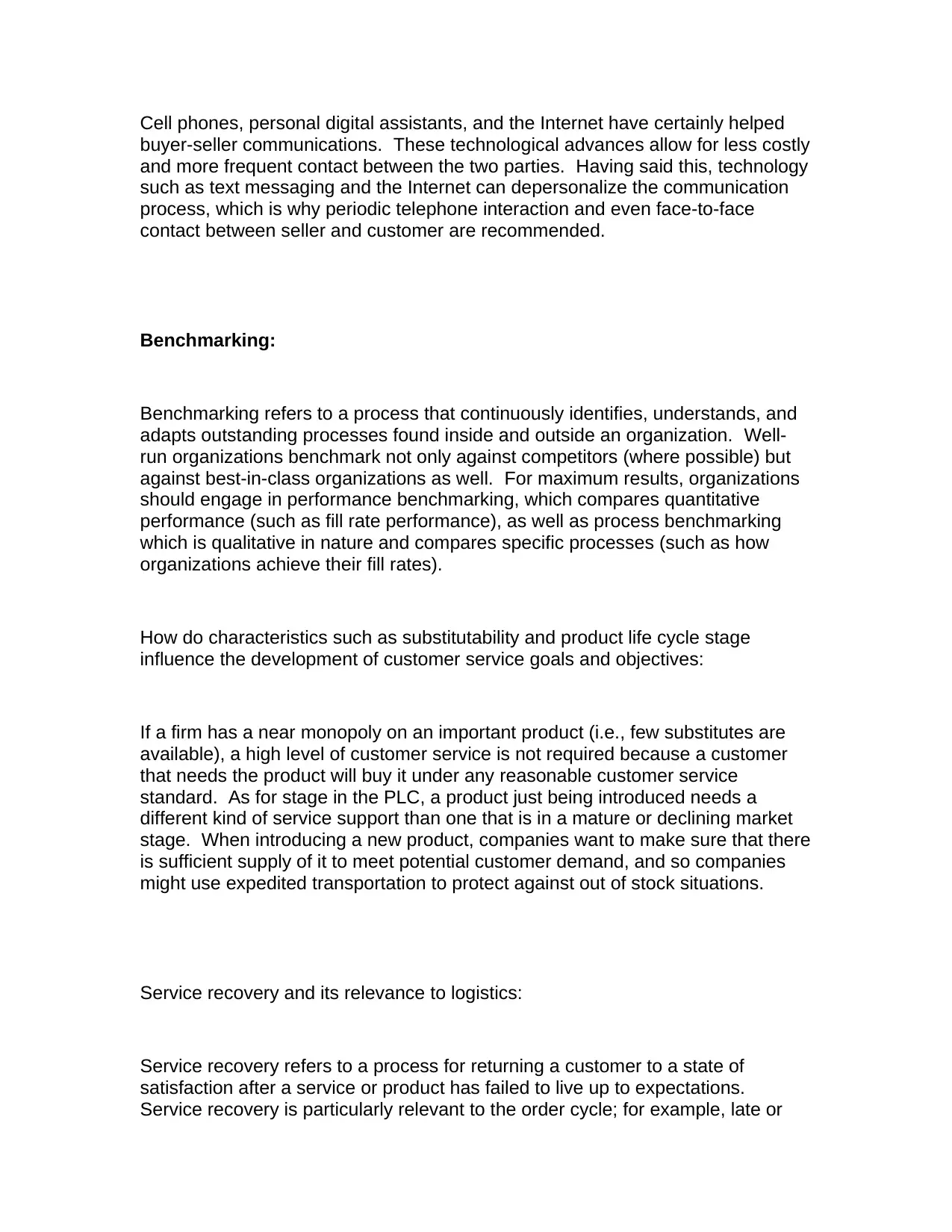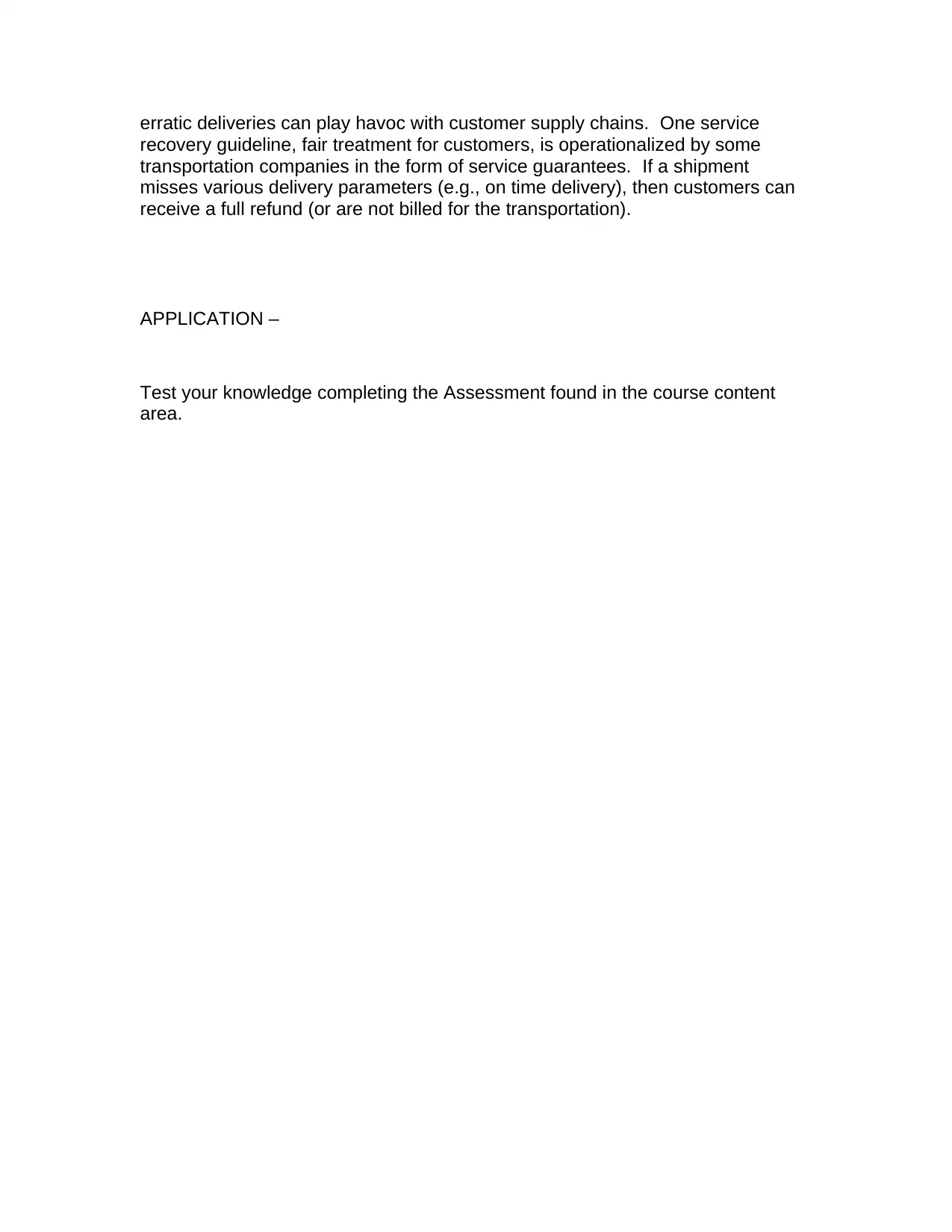The assignment discusses the relationship between order management, demand forecasting, and customer service. It highlights how customer service can be a competitive weapon, as it is difficult for competitors to imitate. The macroenvironmental factors such as globalization and technology advancements drive customers' expectations for higher levels of customer service. The dependability dimension of customer service consists of consistent, safe, and complete delivery. Technological advances in communication facilitate buyer-seller interactions but also depersonalize the process. Benchmarking is a process that identifies and adapts outstanding processes to improve performance. The assignment also discusses how product life cycle stage and substitutability influence customer service goals and objectives. Additionally, it touches on service recovery, which is crucial for logistics and customer satisfaction.
![[object Object]](/_next/static/media/star-bottom.7253800d.svg)
![[object Object]](/_next/static/media/star-bottom.7253800d.svg)
